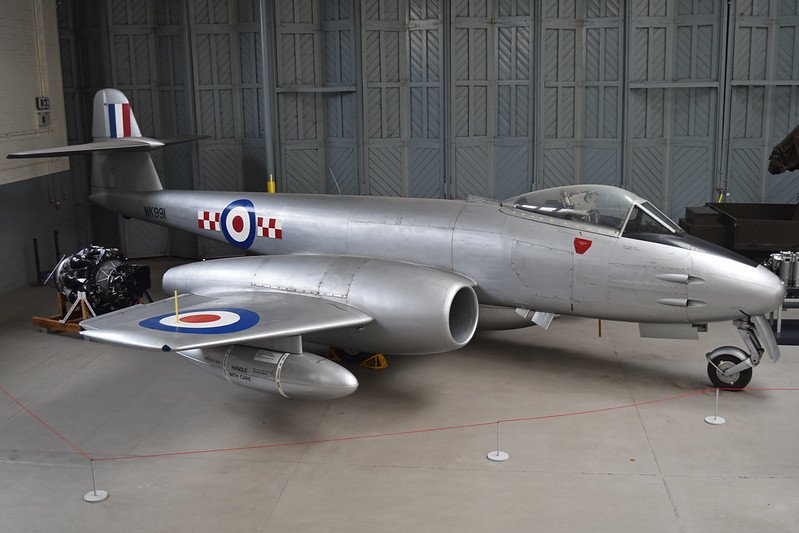Norman Tebbit’s Role in the Dawn of the Jet Age: The Gloster Meteor
The Gloster Meteor was the first British operational jet fighter and the only Allied jet to see combat during the Second World War, marking Britain’s entry into the jet age. Powered by Frank Whittle’s turbojet engines and developed by the Gloster Aircraft Company, its prototype first flew on 5 March 1943, with No. 616 Squadron RAF conducting the first operational sorties on 27 July 1944.
Service and Combat
Initially deployed for home defence against V-1 flying bombs, Meteors achieved their first “kill” in August 1944 by tipping a V-1 off course when the pilot’s guns jammed. They later served in varied roles—including day fighters, night fighters, and reconnaissance—across multiple theatres. Thousands of Meteors (3,947 in total) were built between 1943 and 1954, making it the most-produced British jet of its era.
Design Evolution and Records
Featuring a conventional straight-wing design and twin turbojet nacelles, the Meteor underwent continuous upgrades. Later variants like the F.8 boasted more powerful Rolls-Royce Derwent engines, enlarged rudder for improved handling, and underwing drop tanks to extend range. In November 1945 a Meteor F.3 set an official jet airspeed record at 606 mph, and in 1946 a Meteor F.4 reached 616 mph, cementing its place in aviation history.
Preservation and Legacy
After frontline service, many Meteors were converted into target tugs, research testbeds, and ejection-seat trials aircraft; Martin-Baker used 2 Meteors for live-seat tests for a number of years, and only recently retired one of them. Several are preserved in museums worldwide, including the RAF Museum, Midland Air Museum, Jet Age Museum, and IWM Duxford.
A Narrow Escape: Pilot Norman Tebbit
Among the Meteor’s wartime and postwar aviators was Norman Beresford Tebbit, later Baron Tebbit of Chingford, who trained as an RAF pilot and flew Meteor F.8 jets with 604 Squadron at North Weald. In July 1954, while taking off from RAF Waterbeach, his Meteor failed to gain flying speed. He elected to abandon the takeoff, raised the undercarriage, and the aircraft skidded off the runway, crossed two ditches, and burst into flames. Displaying remarkable composure, Tebbit jettisoned his canopy and escaped the burning cockpit unscathed, later discovering he had fractured two vertebrae in the ordeal.
Lord Tebbit, who narrowly survived that crash long before entering politics, went on to serve as Employment Secretary and Conservative Party Chairman under Margaret Thatcher. He maintained a lifelong passion for aviation, often reflecting on the Meteor’s role in shaping his early career, and went on to fly for BOAC before entering politics. He died peacefully at home aged 94 on 7 July 2025, closing a chapter on one of the Meteor’s most storied pilots.
The Gloster Meteor’s blend of pioneering jet propulsion, versatile operational service, and enduring legacy ensures its place as a cornerstone of aviation history, while the remarkable experiences of pilots like Norman Tebbit highlight the human stories behind these groundbreaking machines.

